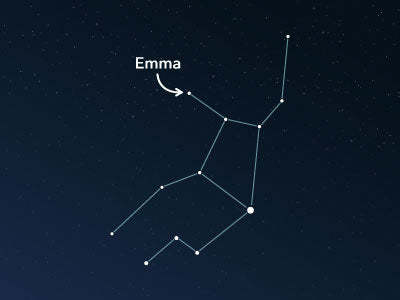The constellation Virgo
Características
- Nome latino
- Virgo
- Hemisfério
- Ambos os Hemisférios
- Visibilidade
- March - May
- Área
- 1294 deg²
- Estrela mais brilhante
- Spica (HIP number 65474)
- Especialidades
- Galaxies, globular cluster, quasar

The Virgo, Latin for maiden, is a very extensive constellation and is primarily known for astrology. Within its area, there are several exciting deep-sky objects to observe.
Hemisphere, visibility, and area
The constellation Virgo stretches across the celestial equator and is visible in many places. It appears between 67° N and 76° S, which means it is not visible north of the Arctic Circle and in areas of the Antarctic. The months of March to May offer the best view of the constellation.
Virgo lies on the ecliptic, so the sun passes through the constellation every year between September 16th and October 31st. During this time, the constellation cannot be seen as it rises and sets with the sun on the horizon.
Although the constellation Virgo is the origin of the astrological zodiac sign Virgo, the current path of the sun deviates from the ancient calculation. This is because the 12 zodiac signs were determined in ancient times when the sun passed through the constellation between August 24th and September 23rd. Today, this is shifted by around one month due to the earth's precession.
Virgo spans approximately 1,294 square degrees across the night sky, making it the second-largest constellation.
However, it is not easy to find, as only two stars are brighter than 3 mag. The brighter of the two is called Spica (Latin: α Virginis, Alpha Virginis). With an apparent magnitude of approximately 0.92, it is not only the brightest star in Virgo, but also one of the 30 brightest stars in the entire night sky. Spica is located in the south of Virgo and extends the handle of the Big Dipper (a part of the constellation Ursa Major). The star is very helpful in locating Virgo in the night sky.
Another option to find the faint constellation is to consider the position of the moon. The moon regularly passes through Virgo at precisely determinable times. Thus, it is useful to look at the lunar calendar and check which nights the moon is in Virgo.
In addition, the neighboring constellations provide good orientation. Along the ecliptic, Libra and Leo are adjacent to Virgo. Other neighbors include Coma Berenices, Crater, Hydra, and Corvus. The constellations Serpens (Caput) and Boötes also border Virgo.
Specialties in the constellation
In Virgo, there is a range of different galaxies, a globular cluster, and a quasar.
The well-known Virgo Cluster is a group of around 1,300 to 2,000 galaxies held together by their mutual gravitational attraction. It lies in the northern part of the constellation, and some galaxies can already be observed with a moderate telescope.
The brightest of the elliptical galaxies in the constellation is M49 (Messier 49). It was discovered in 1771 by the French astronomer Charles Messier and is one of the first galaxies found in the Virgo Cluster. Its apparent magnitude is about 8.3.
Several spiral galaxies are also located in the area of Virgo, including the barred spiral galaxy M61 (Messier 61). Its distance from the Milky Way is estimated to be 66 million light-years. It is one of the largest spiral galaxies in the Virgo Cluster. The Italian astronomer Barnaba Oriani discovered it in May 1779.

Mythology and history
Virgo is an ancient constellation, with the oldest known mention coming from Mesopotamia. At that time, the sun was in the constellation of Libra at the start of the harvest season. The brightest star in Virgo rose just before it, signaling to farmers. At that time, the constellation was named the "Furrow." It was only around 700 BC that Greek astronomers recognized the constellation of Virgo.
There are various mythological versions of how the constellation Virgo came into existence, of which three are presented here.
In one version, it is Kore, the daughter of Zeus and the fertility goddess Demeter. After a few years, Zeus impregnated his own daughter and then ignored her. As a result, Hades, the god of the underworld, was able to take Kore as his bride and gave her the name Persephone. She was allowed to live in the underworld for half of the year and on the earth's surface for the other half.
According to a Roman writer, Virgo is Erigone, the daughter of Icarus. He was murdered by shepherds after a misunderstanding over homemade wine. When the dog of Erigone's family led her to her father's hidden body, she took her own life. Zeus placed her and Icarus's little dog in the starry sky.
Another source says Virgo in the sky is the goddess Dike, who lived on earth when there was still peace. When humanity began to wage war, she fled to the mountains and ultimately to the sky.
PublicadoLeia mais artigos interessantes

An overview of all 88 constellations
Learn more about all 88 constellations and read interesting information about the mythology, visibility, and features.

Aplicativo Planetário
Descubra o céu noturno com nosso aplicativo de planetário!
Disponível para iOS e Android.

Nomeie uma estrela na constelação Maiden
Name a star in a constellation and create something that lasts for eternity.